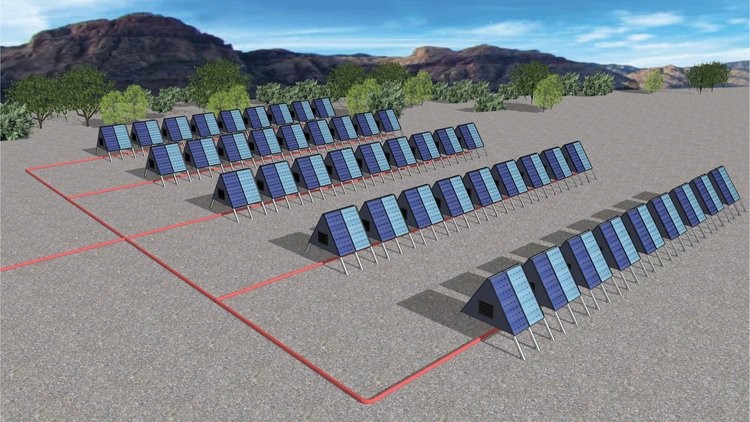We might be able to solve some of our climate problems with the aid of a carbon sponge system!

This solar-powered machine can absorb CO2 from the atmosphere, and fortunately, it recently won a $70,000 contract to absorb and store water in Australia, according to Frontier's press release.
Frontier emphasized that more than ever, carbon dioxide removal (CDR) is crucial to reaching climate goals, together with "radical emissions reductions."
Carbon Capture Technology
According to Interesting Engineering's report, the system was created by AspiraDAC, a global provider of financial infrastructure. It is expected to be installed by its first client, Stripe, later this year.
Through Frontier and its collaboration with Meta, Alphabet, Shopify, and McKinsey, Stripe was able to acquire the system. Frontier also intends to spend $925 million on carbon capture technology for the upcoming nine years to promote the development of CO2-sucking machines.
At a predetermined cost of $1,000 per tonne, AspiraDAC will install around 180 of the devices to capture and store 500 tonnes of CO2 by 2027.
Interesting Engineering further noted that the University of Sydney assisted in the development of the first-generation product. A second-generation machine created using additive manufacturing techniques will come afterward.
Engineering-wise, the technology is constructed around a sponge-like material developed at the University of Sydney that captures CO2 when air passes across it.
Fans draw air into canisters loaded with sponges to generate pure CO2 that can be pumped and deposited underground. Additionally, all the electricity it uses is produced by solar panels that surround the units like an A-frame tent.
Although the organization has not disclosed the project's site or geological storage, the project is certainly considering the possibility of using depleting oil and gas resources in Moomba, South Australia.
According to The Guardian, it is currently finishing up the project's testing stage and intends to start construction later this year.
Will The Tech Really Help Solve the Climate Crisis?
Executive Director of AspiraDAC Julian Turecek said that Australia is the ideal place for DAC because of its great solar energy potential, and with the help of solar-powered modules, the facility can run without conventional energy sources.
Even though the new deal only reduces a small amount of CO2, the company considers it a significant advancement for the sector.
Turecek added that DAC facilities are relatively small, so production can capture similar CO2 emissions with less than 90% of the area required for carbon capture programs that involve reforestation.
However, carbon capture technologies won't resolve the climate crisis alone. For instance, the U.S. Center for International Environmental Law argued that the approach could be a "dangerous distraction" in straying away from fossil fuels.
But solar-powered capture systems could still alleviate the climate crisis if it is leveraged on a worldwide scale.
Related Article : 'World's Most Powerful Collider:' Large Hadron Collider Will Provide 1.6 Billion Proton Collisions Per Second!
This article is owned by Tech Times
Written by Joaquin Victor Tacla
![Apple Watch Series 10 [GPS 42mm]](https://d.techtimes.com/en/full/453899/apple-watch-series-10-gps-42mm.jpg?w=184&h=103&f=9fb3c2ea2db928c663d1d2eadbcb3e52)



